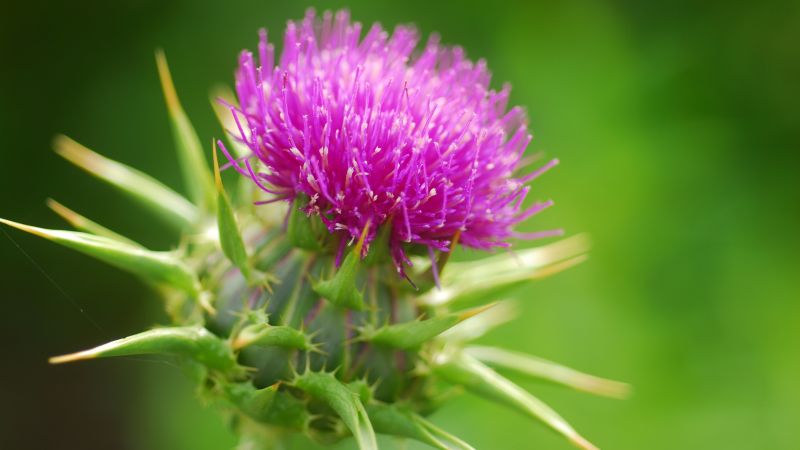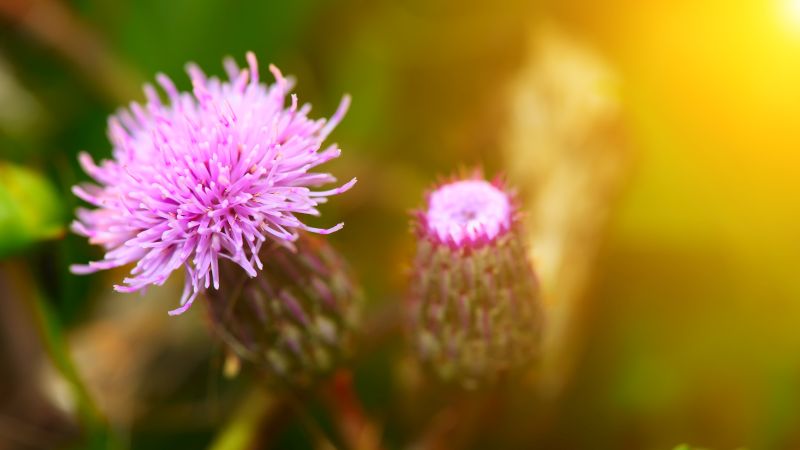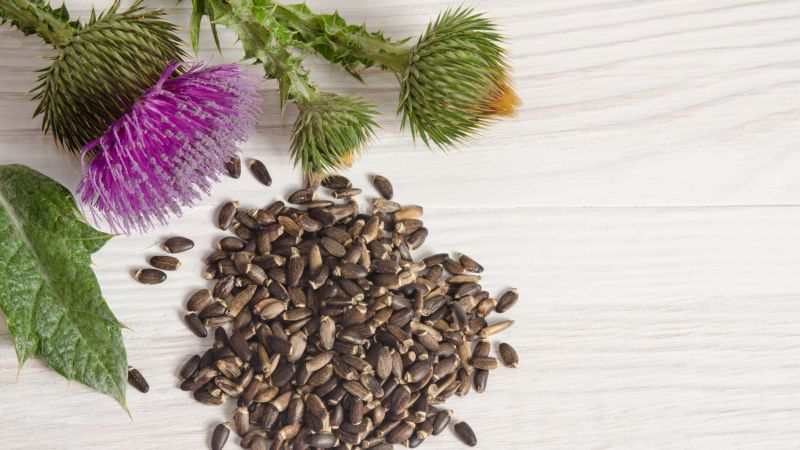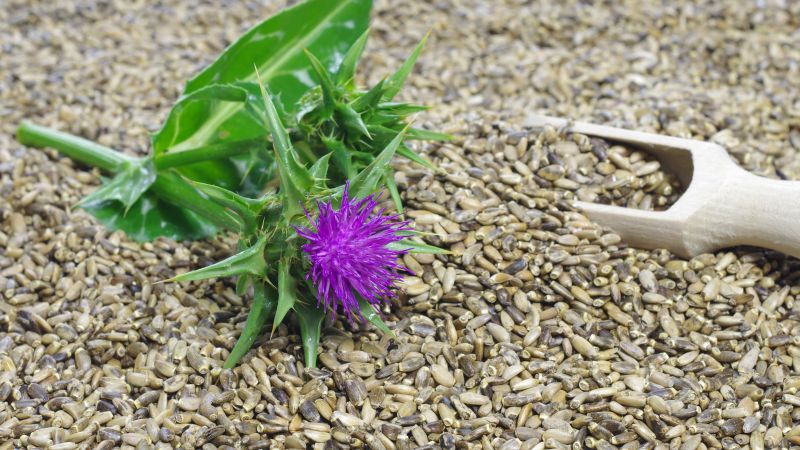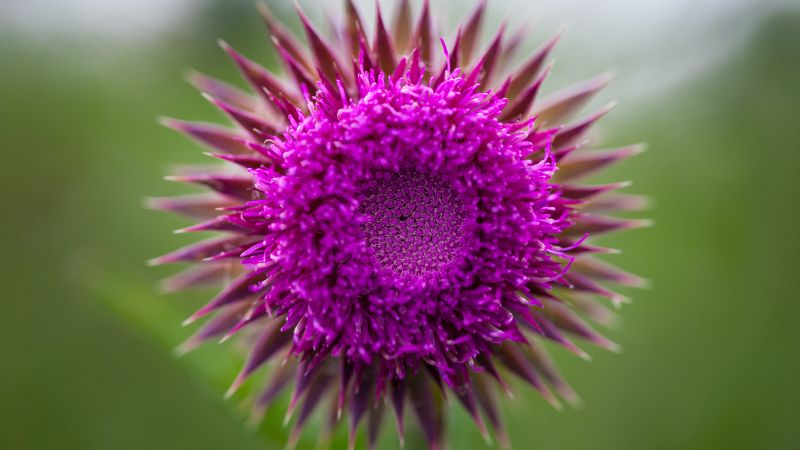Milk thistle
|
|
Time to read 5 min
|
|
Time to read 5 min
If you’re tired of all the chemical-laden skin creams that overpromise and underdeliver, you’re going to love this little plant. It’s known as milk thistle, and while it may not look very pretty, it can leave your skin looking younger longer – without the use of commercial skin irritants. Read on to see what makes this odd plant one of nature’s easiest ways to “turn back the clock.”
Table of content
As fantastic as its anti-aging properties are, milk thistle uses for the skin don’t stop there. It’s also a powerful acne treatment even when taken internally. When taken orally, it flushes toxins from the liver, helping to clear and purify the skin. As the liver clears up, individuals notice a healthier chemical balance in their skin, which often results in a blemish-free glow.
Of course, milk thistle is still widely used as a liver detoxifier. While it was used in ancient times to treat mushroom poisoning, it is now used to improve liver function, as in the case of alcohol-related liver disease. As a natural detoxifier, it draws toxins out of the body, clears up gallbladder issues and relieves the ill effects of chemotherapy.
In fact, this herb has even been shown to reverse damage to the liver from medications, industrial toxins, heavy metals and pollution. Other milk thistle benefits include:
There are 3 main ways to reap the benefits of this flower. The first is as an oral supplement containing its extract.
Topical creams containing milk thistle should be applied directly to the problem areas, such as blemishes, wrinkles or redness. It can be used once or twice per day, and many people report results in as little as 2 weeks. For oral use, look for capsules that supply no more than 150 milligrams of extract per day – unless you’re doing a temporary liver cleanse, in which case you could take more.
Today, individuals around the world can harness the amazing benefits of milk thistle just as ancient cultures did. While it remains a powerful liver cleanser, it is growing more and more popular in the skincare industry for its remarkable anti-aging properties. Even those without lines, wrinkles, and age spots can prevent future skin damage with the powerful antioxidants in milk thistle. Give it a try and let us know what changes it makes for you!
Milk thistle is primarily used to support liver health, as it contains silymarin, which has antioxidant and anti-inflammatory properties. It is often used to help protect the liver from damage caused by toxins, alcohol, and certain medications.
Yes, milk thistle can be beneficial for females, particularly for liver health and detoxification. It may also support hormonal balance, skin health, and reduce inflammation, though more research is needed to fully understand its effects on women's health.
For fatty liver, a typical dose of milk thistle ranges from 140 to 420 mg of silymarin (the active compound) daily, divided into two or three doses. However, it's best to consult a healthcare provider for personalized recommendations and to ensure it complements other treatments.
Milk thistle can be taken either in the morning or at night, depending on personal preference. Taking it with meals may improve absorption and reduce the chance of stomach upset.
Latest News
